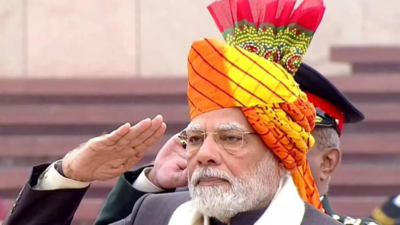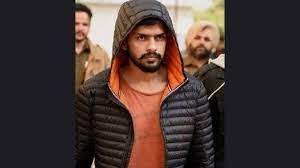Meet the last four liberation warriors of Delhi
NEW DELHI: Delhi observed that there were now just four independence warriors in the city, down from 592 in the 1980s, as India commemorated its 75th Republic Day on Friday. The only remaining freedom fighters among those listed by the Delhi government’s Freedom Fighter Cell are R Madhavan of the Azad Hind Fauz, Om Prakash, who left college to join the freedom movement, and sisters Subhadra and Nirmal Kanta, whose family fought for independence.

Madhavan was born on March 13, 1926, and as a youngster, he joined the Indian Independence League. Later, he became involved with Azad Hind Fauz, serving as their recruiter and fundraiser, after hearing Netaji Subhas Chandra Bose implore Indians to “give me blood and I will give you freedom.”
Madhavan gathered money from 32 locations in Burma, including Sawbwagale, Ywadanshe, Hanthawaddy, Rangoon, and Mayongone. The British imprisoned him for six months in 1945. He now resides in south Delhi’s Vasant Vihar at the age of 97.
“Let us pledge to strive for justice, freedom, and equal rights for every Indian as well as for peace and unity among all who are fortunate enough to live in this glorious nation,” he said in a statement to TOI.
ASKFNLSAKN
In Aligarh, Om Prakash was born in 1926 as well. He was motivated by the independence warriors whilst attending school in Wazirabad, which is now in Pakistan, and as a teenager he started handing out brochures with nationalist chants. In order to participate in the struggle against the imperialist authorities, he left college early. In Wazirabad, he detonated a railway track between 1943 and 1944, leading to his imprisonment in Multan Central Jail. In order to guarantee that the sick freedom fighter Ram Kishan received medical attention, he demonstrated there and pushed the prison administration to move Kishan from another jail to the central jail.
“Seeing the country progress fills my heart with joy,” said Om Prakash. I think the nation is doing well and has a bright future. “I like everything about Delhi,” he said, recalling the parts of ancient Delhi connected to his revolutionary days.
At the age of twelve, Subhadra Khosla became one of the youngest prisoners during the freedom struggle. She defied the British by raising the Indian flag on the compound while she and a few other female inmates were housed in the Lahore women’s jail. She resides in Sultanpur at the moment.
Khosla demonstrated the profound impact of Mahatma Gandhi on her family by participating in the campaign to support khadi and boycott imported clothing. Nirmal Kanta, her sister and one of the youngest independence fighters, resides in Mandakini Enclave to this day. At Gandhi’s invitation, their father also interrupted his medical studies to join the liberation cause.
The government of Delhi provides independence warriors with pensions and medical reimbursements. “There were 592 freedom fighters when the scheme was started,” an official said. Now, there are only four remaining. In addition to honoring freedom fighters at official occasions, the general administration department regularly plans activities to honour the memory of those who fought for India’s independence from colonial authority.







